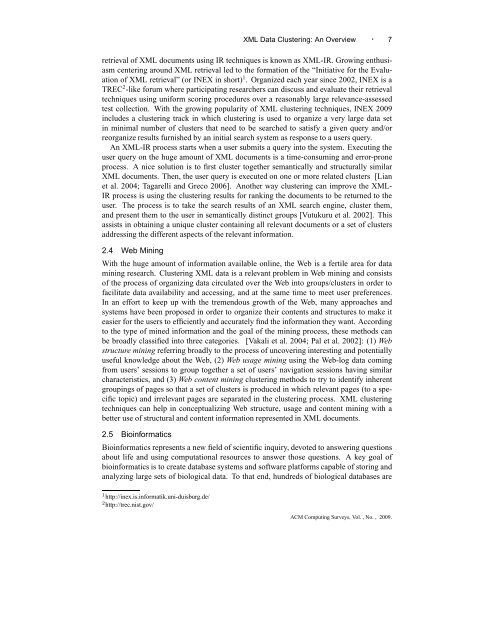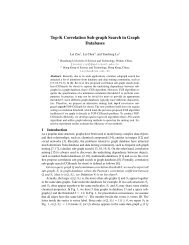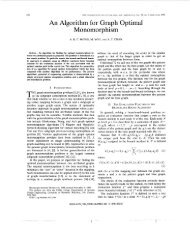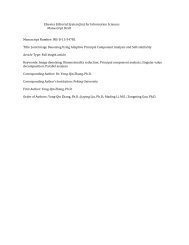PDF (1MB) - QUT ePrints
PDF (1MB) - QUT ePrints
PDF (1MB) - QUT ePrints
You also want an ePaper? Increase the reach of your titles
YUMPU automatically turns print PDFs into web optimized ePapers that Google loves.
XML Data Clustering: An Overview · 7<br />
retrieval of XML documents using IR techniques is known as XML-IR. Growing enthusiasm<br />
centering around XML retrieval led to the formation of the “Initiative for the Evaluation<br />
of XML retrieval” (or INEX in short) 1 . Organized each year since 2002, INEX is a<br />
TREC 2 -like forum where participating researchers can discuss and evaluate their retrieval<br />
techniques using uniform scoring procedures over a reasonably large relevance-assessed<br />
test collection. With the growing popularity of XML clustering techniques, INEX 2009<br />
includes a clustering track in which clustering is used to organize a very large data set<br />
in minimal number of clusters that need to be searched to satisfy a given query and/or<br />
reorganize results furnished by an initial search system as response to a users query.<br />
An XML-IR process starts when a user submits a query into the system. Executing the<br />
user query on the huge amount of XML documents is a time-consuming and error-prone<br />
process. A nice solution is to first cluster together semantically and structurally similar<br />
XML documents. Then, the user query is executed on one or more related clusters [Lian<br />
et al. 2004; Tagarelli and Greco 2006]. Another way clustering can improve the XML-<br />
IR process is using the clustering results for ranking the documents to be returned to the<br />
user. The process is to take the search results of an XML search engine, cluster them,<br />
and present them to the user in semantically distinct groups [Vutukuru et al. 2002]. This<br />
assists in obtaining a unique cluster containing all relevant documents or a set of clusters<br />
addressing the different aspects of the relevant information.<br />
2.4 Web Mining<br />
With the huge amount of information available online, the Web is a fertile area for data<br />
mining research. Clustering XML data is a relevant problem in Web mining and consists<br />
of the process of organizing data circulated over the Web into groups/clusters in order to<br />
facilitate data availability and accessing, and at the same time to meet user preferences.<br />
In an effort to keep up with the tremendous growth of the Web, many approaches and<br />
systems have been proposed in order to organize their contents and structures to make it<br />
easier for the users to efficiently and accurately find the information they want. According<br />
to the type of mined information and the goal of the mining process, these methods can<br />
be broadly classified into three categories. [Vakali et al. 2004; Pal et al. 2002]: (1) Web<br />
structure mining referring broadly to the process of uncovering interesting and potentially<br />
useful knowledge about the Web, (2) Web usage mining using the Web-log data coming<br />
from users’ sessions to group together a set of users’ navigation sessions having similar<br />
characteristics, and (3) Web content mining clustering methods to try to identify inherent<br />
groupings of pages so that a set of clusters is produced in which relevant pages (to a specific<br />
topic) and irrelevant pages are separated in the clustering process. XML clustering<br />
techniques can help in conceptualizing Web structure, usage and content mining with a<br />
better use of structural and content information represented in XML documents.<br />
2.5 Bioinformatics<br />
Bioinformatics represents a new field of scientific inquiry, devoted to answering questions<br />
about life and using computational resources to answer those questions. A key goal of<br />
bioinformatics is to create database systems and software platforms capable of storing and<br />
analyzing large sets of biological data. To that end, hundreds of biological databases are<br />
1 http://inex.is.informatik.uni-duisburg.de/<br />
2 http://trec.nist.gov/<br />
ACM Computing Surveys, Vol. , No. , 2009.












